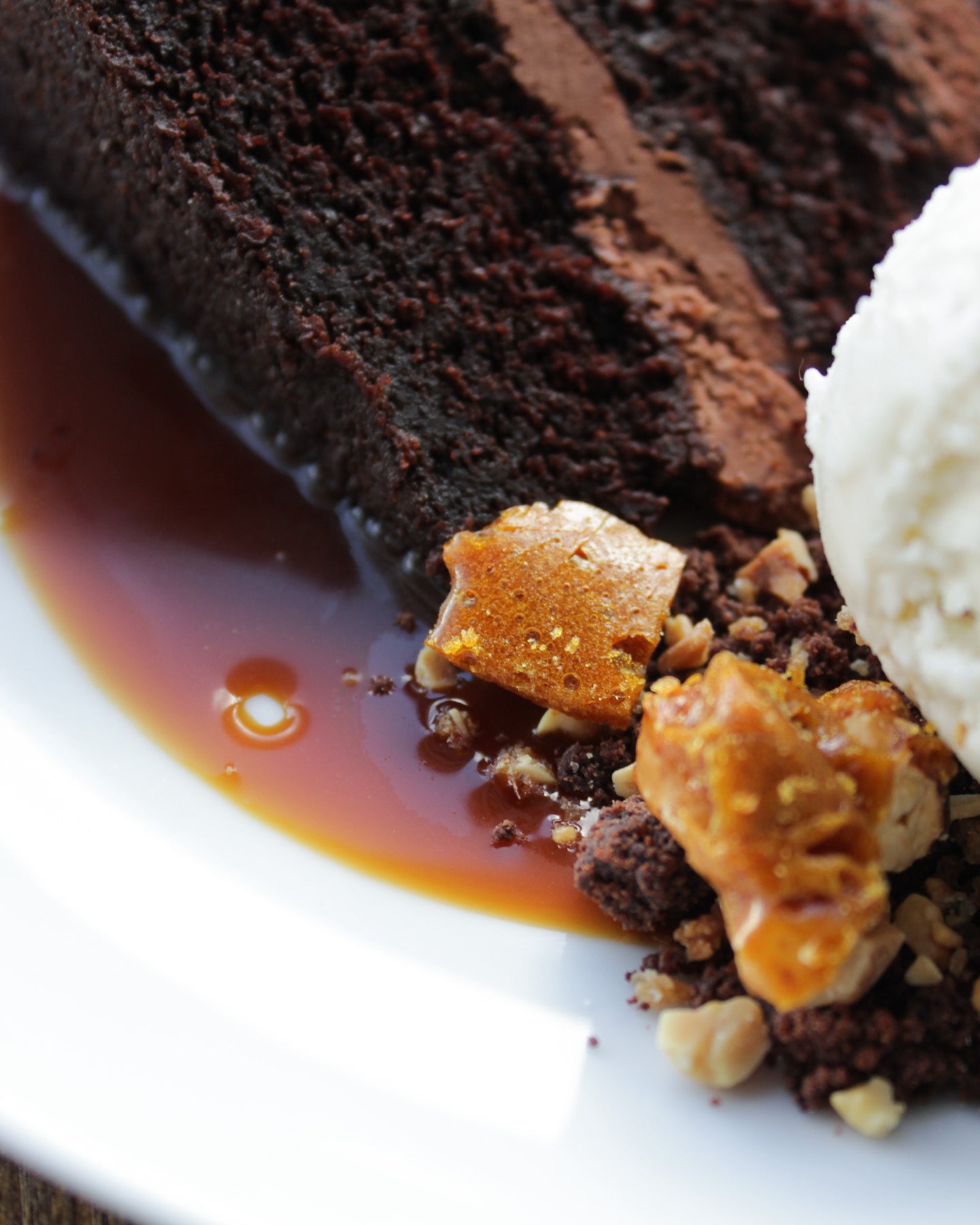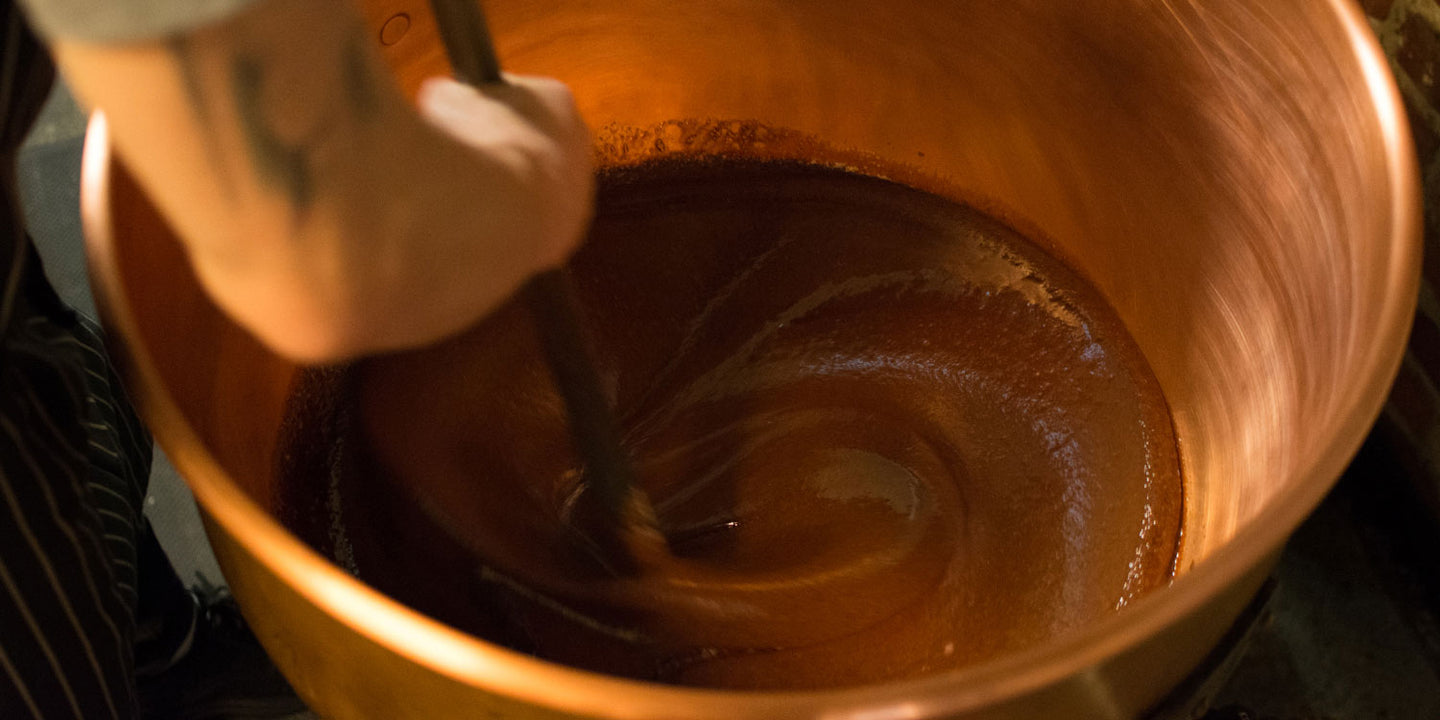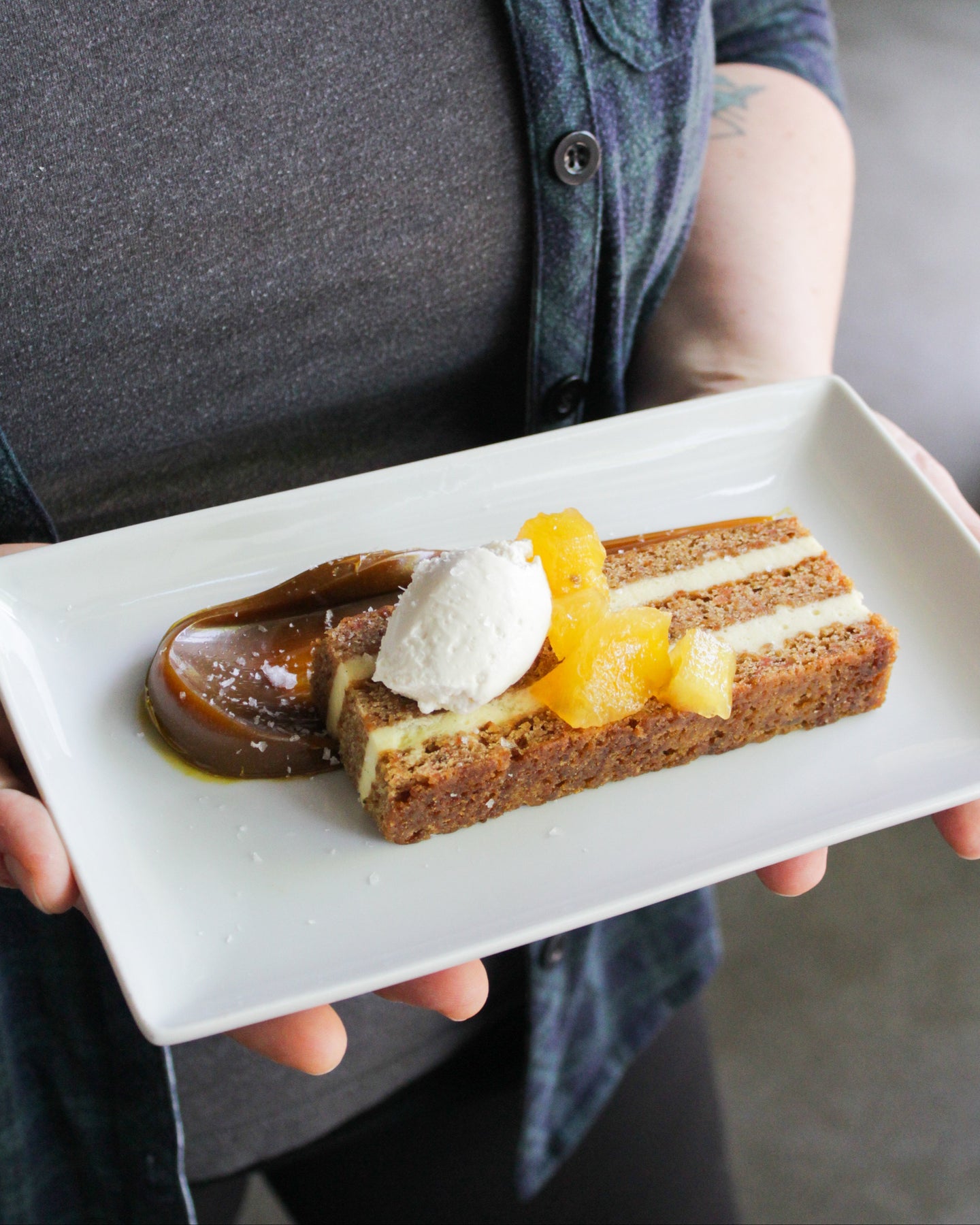Taxes and shipping calculated at checkout






BE HONEST. STAY TRUE.
We are obsessed with making caramel and all of the intricacies of the process.
Caramel is the result of sugar reaching a specific temperature, when the sugar begins to change structure, resulting in a dark amber color, and a flavor that turns richer, sweeter and increasingly bitter the darker the sugar becomes.
The sugar (sucrose and glucose) begins to caramelize at 320 degrees fairenheight. That’s hot! (imagine that water boils at 220 degrees.) You can caramelize sugar in one of two ways: dry and wet. We make all of our sauces using the dry method, read on to find out the difference.
Wet: In this method, you use water to dissolve the sugar in your pot before you begin the caramelization process. You put your water in a pot, add the sugar, and use very little to no stirring while the sugar dissolves and begins to cook and turn into a syrup. During the cooking process, you need to evaporate all of the moisture (water) you added in the beginning. Once enough water has evaporated, your temperature will begin to increase, and eventually reach a point where the sugar is hot enough to begin caramelization (330 degrees). You will then swirl your caramel until the desired color is reached, and add your cream of choice (dairy, coconut, etc.) to make a sauce or a candy chew. If you are making a sauce, you would evaporate enough moisture from the liquid you added to reach the consistency of the sauce you desire. If you are making a chew, you would evaporate more moisture the thicker you want your chew. Following?
Dry: In this method, there is no water used. Autumn taught herself how to dry-burn caramel early in her career and fell in love with the demanding physical work it required, along with the heat of the fire and the age of the technique. Here, you begin to melt the sugar crystals in a pot over high heat. There is enough inherent moisture in sugar to actually dissolve the crystal without the use of water. Because the amount of moisture is far less to begin with compared to the wet method, this method requires intense attention every second of the process and constant stirring. When we make caramel, we melt 50 pounds of sugar at a time in a massive copper kettle, using a 3 foot long wooden paddle. It requires 90 minutes of constant stirring, and a trained eye to detect when the crystals are completely dissolved, and when the correct color is achieved. We like to bring our caramelization close to as dark as we can go, as this depth of color denotes more bitter and smoky notes, and less sweetness, which we find to be incredibly satisfying and reminiscent of the PNW wilderness. Once the 50 pounds of sugar crystals have turned to molten hot caramelized liquid, it is time to add the cream. As with the wet method, the amount of cream added and the cooking time after will give you varying consistencies of sauce and/or chews.
The other method that most producers of caramel use, actually doesn’t involve caramelized sugar at all. In this method, you add your cream, sugar and anything else together in a pot and cook until a reaction begins to take place, called the Maillard reaction. Here, the amino acids in the dairy react with the sugar to create a flavor that has some similarities to caramel, and color as well. This is how dulce de leche is made, as well as sweetened condensed milk. You can tell the difference between true caramel and it’s distant relative, at first glance by color. True caramel will be much darker. The flavor of true caramel will always be less sweet, and will typically have notes of deep nut and toast, accompanied by bitterness.
As purists, we wouldn’t think to produce something and call it something it isn’t. And hey, we don’t mean to hate on that light brown delicious sweet liquid commonly known as caramel, but, it just isn’t. This is where our beloved BE HONEST STAY TRUE came from – a reminder for all corners of life.
